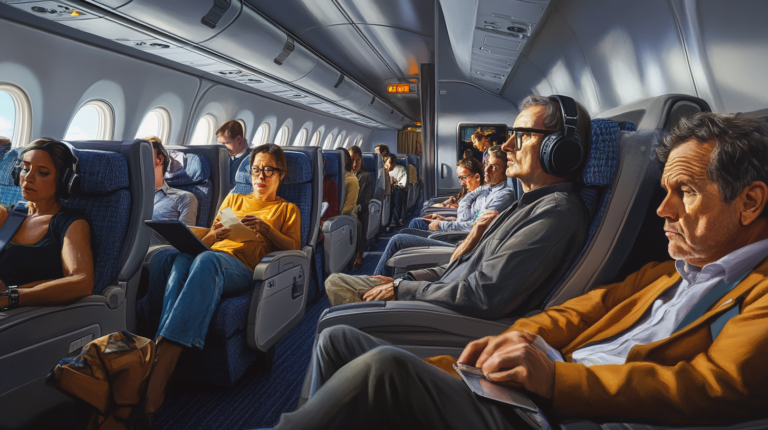Boost Your Miles: The Best Business Travel Rewards Cards

Business travel, at least in my experience, isn’t just about rushing between meetings. I’ve found plenty of ways to relax and enjoy the journey—especially with the right rewards card in my wallet. By sifting through countless real-world stories from other travelers, I’ve learned how valuable these cards can be for turning everyday business costs into flight miles and extra travel comforts.
Why a Business Travel Rewards Card?

I’ve observed that many business travelers are often juggling expenses, client demands, and constant deadlines. Having a dedicated rewards card can ease some of that pressure. According to a 2024 survey by the National Business Travel Association, over 60% of frequent business travelers use specialized credit cards to streamline spending tracking and compile perks. It’s not just about the mileage—it’s also about enjoying every moment in the air (or on the road) and turning each trip into something more memorable.
From my vantage point, the real benefits come when you start systematically earning rewards on daily overhead like office supplies, client meals, and even ride-shares. These miles or points quickly add up, dropping the cost of future flights or upgrades. I’ve found that focusing on cards with straightforward redemption formulas—ones that let you leverage points for flights, hotel stays, or statement credits—is crucial. After all, transparent earning structures are what every busy traveler needs.
There’s also the extra convenience. Expense management reports are consolidated into one monthly statement, making it easier to see how business funds are allocated. From what I’ve seen, many providers even integrate with bookkeeping tools, so your accounts stay up to date without any added hassle. In the end, it’s about getting more out of every booking, filling, or purchase you’d be making anyway.
Bank of America’s Business Advantage Travel Rewards

In my own travels, card ease-of-use matters. Bank of America’s Business Advantage Travel Rewards World Mastercard® shines here because it’s devoid of annual fees—meaning there are fewer recurring costs to eat into your rewards. I’ve noticed that this card appeals most to smaller operations and freelancers who need something versatile and budget-friendly. Online account management and mobile banking access are straightforward to set up, which helps busy folks view and track expenses without skipping a beat.
What really captures my attention is the built-in travel insurance, lost luggage coverage, and trip delay protection. Those are big wins if you’re on the move every week, racing between airports. According to industry data from 2025, trip delays have become more common as flight schedules tighten, so having that safety net can be critical. And with QuickBooks compatibility, you can keep financial records organized, which lets you focus on your real mission—your business.
It’s also helpful that they provide free access to Dun & Bradstreet credit scores, letting you keep an eye on your business credit standing. While terms are always subject to change, it pays to read the fine print carefully. I’ve learned time and again that understanding a card’s fee structure can be the difference between maximizing rewards and getting hit with unexpected costs.
Major Issuer Highlights

I often compare multiple issuers before settling on any card because each has its own unique strengths. From what I’ve read in major publications like Forbes Advisor, CNBC Select, and Business Insider, cards such as the Chase Ink Business Preferred, American Express Business Platinum, and Capital One Venture X still dominate the lists. They tend to offer intro bonuses that I’ve seen save travelers hundreds—sometimes thousands—of dollars in flights or even lounge access over the first year.
If you’re partial to a specific airline or hotel chain, there’s value in exploring branded cards like Delta or Marriott, which often include loyalty perks like free checked bags or earlier boarding times. Truist, meanwhile, stepped into the arena with both a Cash Rewards option and a Travel Rewards card offering double miles on travel purchases. The annual fee waiver in the first year can be a big draw for people looking to test the waters. And for tech-forward businesses, I’ve seen Brex stand out with advanced expense tracking tools—it’s well-suited for startups that are scaling quickly.
A recent study suggests that companies able to align their preferred travel providers with a card’s reward ecosystem often see up to a 10% reduction in overall travel expenses. That’s a tangible measuring stick for anyone trying to decide among multiple cards. And once you notice how certain cater more to large sign-up bonuses, others toward flexible point redemptions, and still others to lounge perks, it becomes obvious there’s no single perfect option for everyone—only the best fit for you.
Key Benefits to Keep in Mind

Whenever I weigh a new business card, I look beyond basic point-earning. The real difference-makers often include trip cancellation protection, extended warranty coverage on purchases, and fraud liability safeguards. If something goes awry during your travels—or if you simply make a larger purchase for the office—those extra layers of protection can pay for themselves in peace of mind.
What I appreciate most, though, are the 0% introductory APR provides that help manage cash flow if you need to carry a balance temporarily. Some also hand out bigger rewards for specific categories like gas, dining, or technology services. In my experience, you can stack up points a lot faster than you’d think if you’re strategic about where you swipe that card.
There’s also the chance to deposit cash-back value into a business checking account or funnel it directly into future travel. If you’re anything like me, you’ll quickly see how those rewards become an effective budgeting tool—especially if you’d love to upgrade your seat on that next flight or cover the cost of a hotel suite on a business trip. These perks can transform the drudgery of business travel into something that actually rejuvenates you.
How to Choose the Perfect Fit

While traveling, I’ve noticed that the ideal card differs from person to person. You might want one with no annual fee, or maybe a card that has an annual fee but offers lounge access that matches your flight frequency. For me, it often boils down to the spending categories that give me the most return—since I like to rack up miles quickly and get upgrades whenever possible.
When deciding on a card, it pays to read up on the issuer’s lending criteria and see how your credit score measures up. FICO-based approval guidelines can vary, so if your score is borderline, one issuer might accept your application while another denies it. Checking your score in advance and weighing each card’s strengths lets you find something that aligns well with your specific financial situation.
I’ve discovered that no single card nails it all. Some cards excel in benefits for international travelers, especially if they waive foreign transaction fees. Others are better for those who spend heavily on entertainment or digital marketing. The key is to match your travel style with the card’s reward structure—analyzing how quickly those miles or points will convert into the benefits that matter most to you.
Final Thoughts

By harnessing the right card, you turn routine business spending into a first-class travel experience. All those project charges and group lunches can morph into free flights, hotel upgrades, or even lounge access. In 2025, with airfares fluctuating and baggage fees on the rise, a solid rewards strategy can translate into steady savings for you or your business.
I suggest taking a long look at your current travel habits. Are you commuting by plane multiple times a month, or do you take fewer but more extended trips? Do you prefer lounge access, or would you rather have annual fee savings? Reviewing these details will help you shortlist the cards that check the right boxes. Ultimately, it’s all about smoothing out your journey so you can enjoy the ride.
Remember, every mile has a story behind it—especially when you’re leveraging points for your next memorable seat by the window. Nobody wants to miss the takeoff or landing from that perfect vantage point.
Ryder’s Take
From my perspective, business travel is about comfort and possibility. I constantly analyze seat layouts to secure that ideal spot, whether it’s a wide recliner in the front or a bulkhead row with extra legroom. When I combine those seat-finding hacks with the right rewards card, I end up transforming even short flights into pleasant escapes.
To me, the key lies in focusing on the details: early boarding to snag overhead space, point transfers that extend your travel reach, and lounge benefits that help you unwind before a flight. Small touches can make a massive difference in how you experience the skies.
Seat5A is my go-to destination for fresh travel strategies and inspiration.






